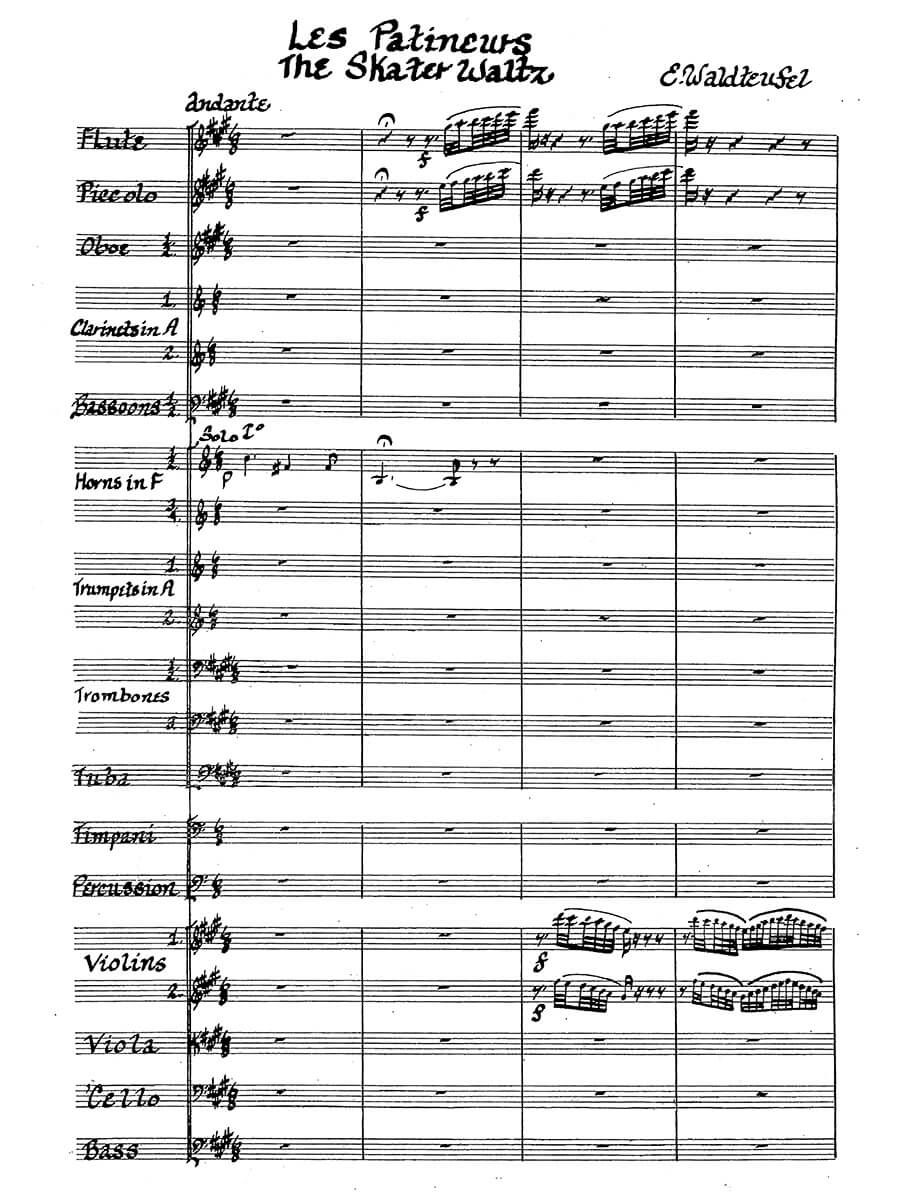Les Patineurs Op. 183, concert waltz
Waldteufel, Émile
21,00 €
Emile Waldteufel – Les Patineurs (The Skaters) op. 183
(b. Strasbourg, December 9, 1837 – d. Paris, February 12, 1915)
Preface
In the course of the 19th century, the waltz – originally derived from the ländler or German dance – advanced to a genre of sophisticated instrumental music that went far beyond its role as a dance. One only has to think of the very elaborate waltz compositions, as one encounters them, for example, in the piano music of Frédéric Chopin. But the waltz has also increasingly found its way into orchestral music: Splendid orchestrations and quite considerable lengths characterize these symphonically arranged concert waltzes, which were not only created for the ballroom, but are also at home in the concert hall to this day. The important position that the concert waltz attained in the second half of the 19th century is particularly associated with Vienna and there with the name Johann Strauss (son). Even Johannes Brahms – as one of the most important symphonic composers of the 19th century – acknowledged the importance of this genre by once noting the beginning of Strauss’ famous Donauwalzer and adding “Unfortunately not by Johannes Brahms”.1 To this day, the great, symphonically arranged concert waltzes have their permanent place in concert halls and are, for example, indispensable at the annual New Year’s Concert of the Vienna Philharmonic Orchestra.
However, waltz traditions can also be found away from Vienna, especially in France. The waltz Les Patineurs (The Skaters) op. 183 by Emile Waldteufel – undoubtedly the most famous work by the Alsace-born master – also belongs to the French tradition. With its elegantly gliding melodies and virtuosic soaring runs, the work contains tone-painting elements that are reminiscent of the gliding and jumping of ice skaters and thus do honor to the work’s title. Although Waldteufel is little known as a composer, he can be considered an important figure in the French waltz tradition. In this respect, Hans Joachim Moser, in his three-volume Geschichte der deutschen Musik (History of German Music), explicitly speaks of a “French branch of development Chopin-Liszt-Offenbach-Waldteuffel [sic!]-Métra” with regard to the history of the waltz,2 so that Waldteufel is classified as part of this development process. Sometimes he is considered “the ‘French Strauss’”3 , although it does not reach the worldwide popularity of the latter.
The present edition – a reprint of a handwritten score – aims to make Waldteufel’s most famous work accessible again to a wider circle of interested music lovers. Whether the instrumentation is the work of the composer himself cannot be clearly determined. What is certain is that Waldteufel composed his works for piano and offered them in this form to his publishers.4 The orchestration was only done later, as needed.5
Bernd Wladika, 2022
1 Cf. Michael Ladenburger / Otto Biba: Johannes Brahms und Ludwig van Beethoven. Johannes Brahms und Ludwig van Beethoven. Zeugnisse einer künstlerischen Auseinandersetzung. Bonn 1997, p. 16.
2 Hans Joachim Moser: Geschichte der deutschen Musik vom Auftreten Beethovens bis zur Gegenwart. Stuttgart and Berlin, 2nd edition 1928, reprint Hildesheim 1968, p. 353.
3 Cf. Manuela Jahrmärker: Art. Waldteufel, (Charles) Emile. In: Ludwig Finscher (ed.): Die Musik in Geschichte und Gegenwart. Personenteil, vol. 17. Kassel and Stuttgart 2007, sp. 399.
4 Cf. ibid.
5 Cf. ibid.
| Score No. | 4645 |
|---|---|
| Edition | Repertoire Explorer |
| Genre | Orchestra |
| Size | |
| Printing | Reprint |
| Pages | 56 |
